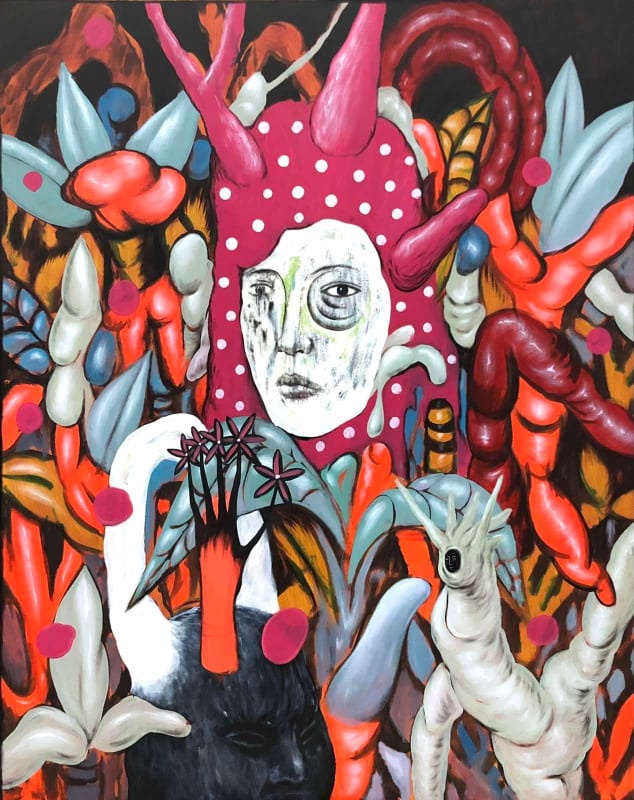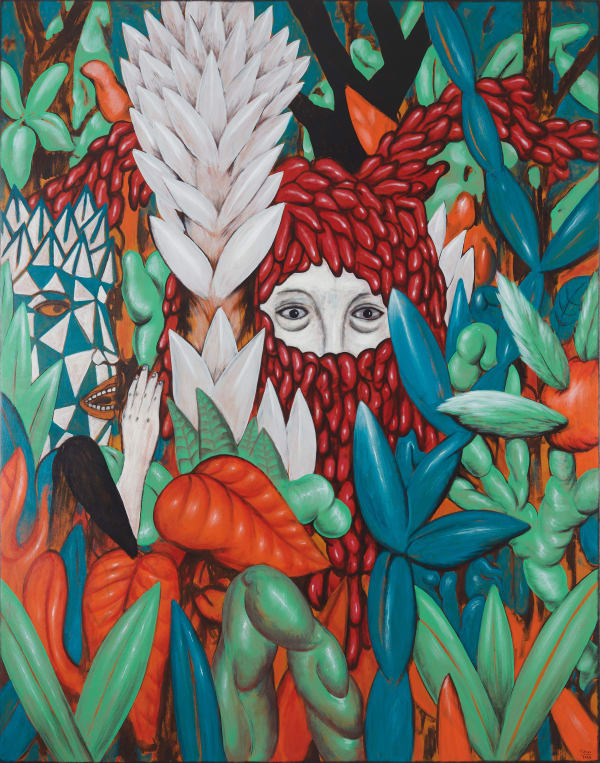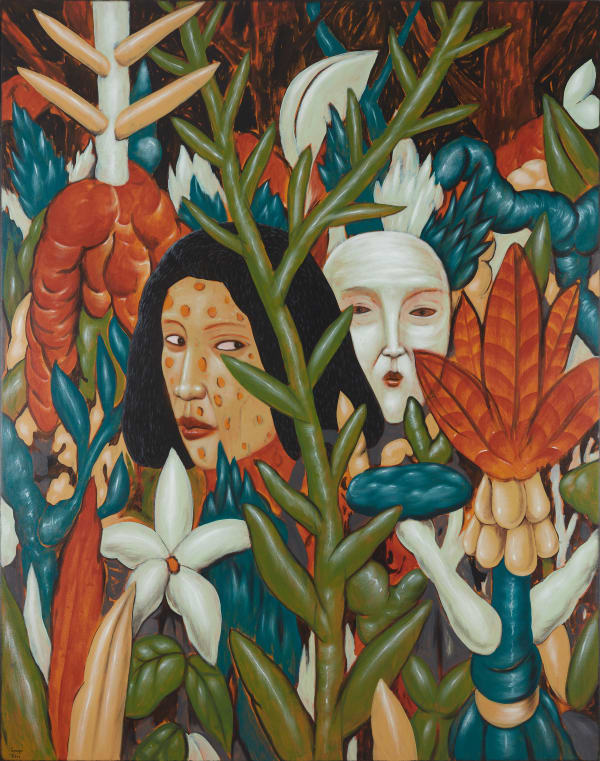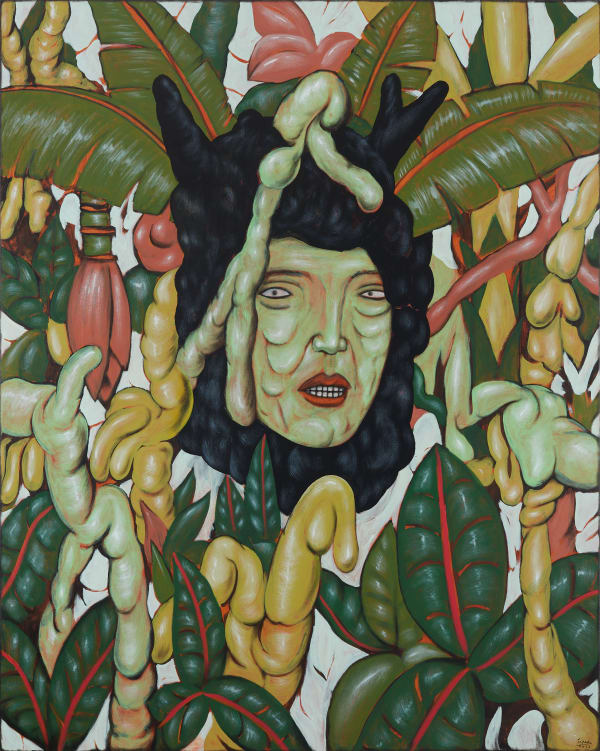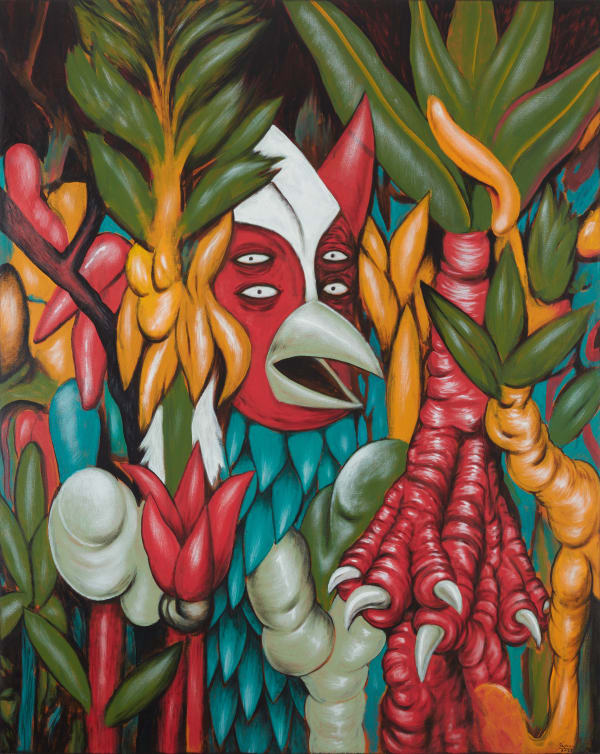Rodel Tapaya: Can’t see the Forest for the Trees
Past exhibition
Overview
Private preview: Thursday 25 May, 6 - 8 pm.
Jack Bell Gallery is pleased to present an exhibition of new paintings by Rodel Tapaya. This will be the artist's first solo show with the gallery.
"In this new series of portraits filled with lush flora and fauna Tapaya signals an intellectual turn to the ecocentric, spotlighting nature as the primary actor in the folklore that fuels his artistic imagination. The composition recalls a peculiar Southeast Asian artifact: Wat Mahathat's Buddha head that emerges from tree roots in Ayutthaya. Art historian Gregory Levine discusses this Buddha head to challenge our appreciation of art amidst the Anthropocene. Understood as the most recent period in Earth’s history when human activity started to have a significant impact on the planet’s climate and ecosystems, the Anthropocene has occasioned human self-reflection about the consequences of this degeneration, reorienting the objectives of art and activism to criticizing immense biospheric destruction and unequally distributed harm to people and other species.
Tapaya comes into this tradition via inquiry into myth and folklore, with several of his canvasses enjoining us to see beyond ourselves in our artistic expressions; to intervene against neoliberal speciesism, biospheric collapse and human extinction. In using the adage “Can’t See the Forest for the Trees,” Tapaya means seeing the bigger picture for what it is: a network of actors and actions, a site of entanglement and conjuncture. The forest has its own agency, potency, and value and nature is not just ornament or source material but its own maker in an ecological collective such as the forest. Throughout the history of art, trees are often ignored and cropped out perceptually and analytically, since they are often placed outside the immediate field of vision, but they have also been personified in form and emotion, as allegorical reflection of ourselves. In Tapaya’s works, trees are divinely and ritually animate, even sentient. Their presence provides a counterpoint to symbols, selves, and worlds, granting them both livability and grievability.
Vegetative forms in portraiture have been around since the Renaissance. The Italian painter Giuseppe Arcimboldo (1526-1593) constructed portrait heads by overlapping objects that make various anatomical shapes; with each assembled object relating to the portrait’s characterization. 19th century Filipino painter, Jose Honorato Lozano’s Letras y Figuras (1815-1885) also used flora and fauna to create portraits not by painting likeness but by spelling the names of their commissioners. Both examples show quite literally how nature shapes human identity.
While the practice of portraiture is often characterized by the extraction of the human subject away from his ecological surroundings, Tapaya moves in the opposite direction. In Southeast Asian epics, forests both real and imagined often work to plant the scene of legend and myth and the relationships between nature and man often generate the nucleus of the narrative. Like families of trees communicating or helping each other via the root system or fungi, Tapaya draws from forests pregnant with folklore to convey a timeless environmental message: that it is not nature that belongs to man but man who belongs to nature."
- Geronimo Cristobal
Tapaya was born 1980 in Montalban, Philippines. The artist has recently been included in a two-person exhibition at the He Xiangning Art Museum Shenzhen, China. His work has been acquired by the Art Gallery of New South Wales, Sydney, Australia; The National Gallery of Australia, Canberra; Mori Art Museum, Tokyo; Singapore Art Museum; Bencab Museum, Benguet, Philippines; and the Ateneo Art Gallery, Manila, Philippines.
Works
Installation Views
